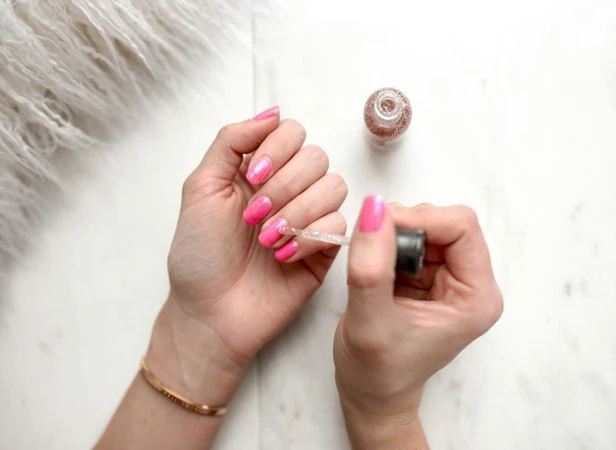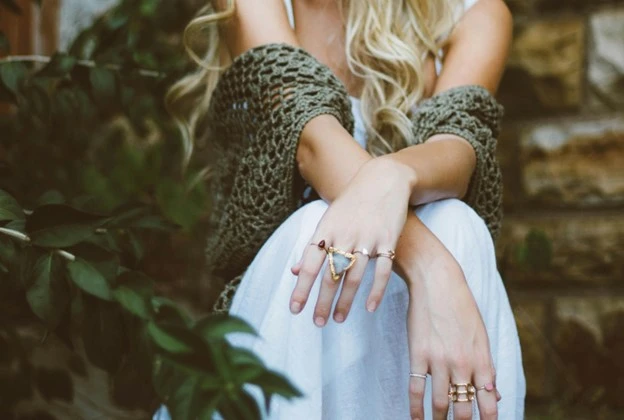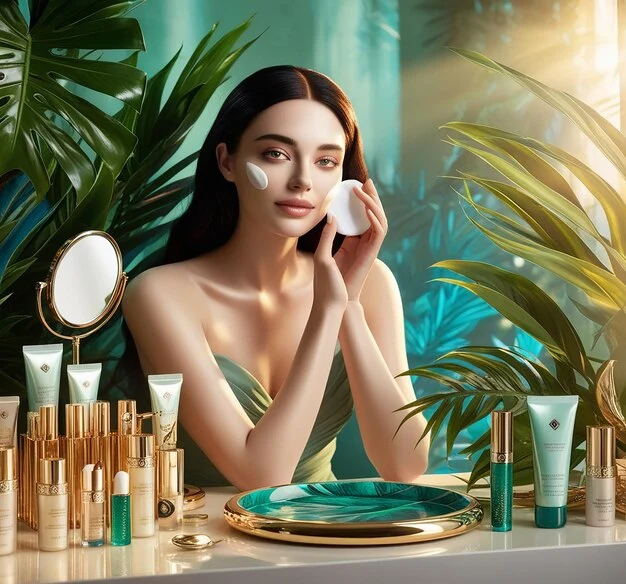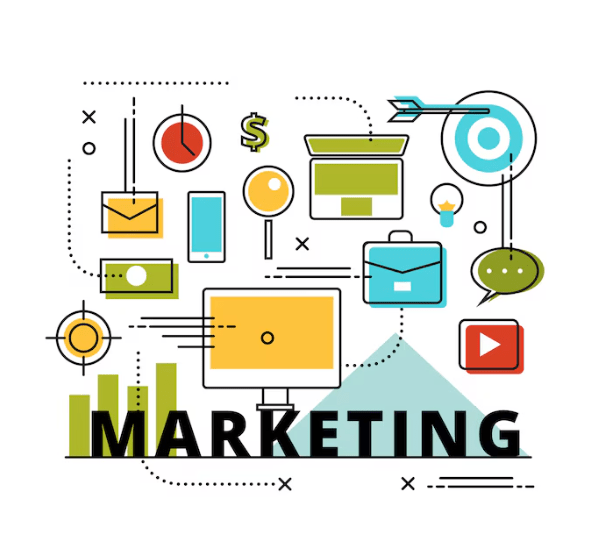Key Takeaways
- Do you use any beauty advertising strategy for your beauty brand?
- Are your beauty advertising services up to date?
- In the below blog, you will get to know the top 5 beauty advertising strategies of 2024.
There is hardly any industry that can remain the same and not go through some evolution, but especially the beauty advertising industry.
Not one year passes without new trends, new technologies, and new demands from consumers that mould the market.
As we advance towards 2024, beauty brands and marketers, in particular, should learn to be proactive. It is important to analyze possible changes so that you have a strategy and are not in the losing position.
In this article, we are focused on the top 5 beauty advertising strategies of the future!
These trends will further affect the industry, but they will also change the very essence of the brand-consumer relationship.
They include
- personalization
- going green
- inclusivity
- technological convenience ever so present, and, above all,
- content
Findings on how to make use of these trends will also be provided to enable better interaction with customers, boost sales, and grow the brand equity further.
Whether you run a beauty brand, are a marketer, or just wondering what’s new in the industry – this article is for you.

Fig 1. An image of a nail painting job in the process. [Source: Element5 Diigtal]
The Superiority of Personalized Buying Experience
There is enough evidence in the marketing science that underscores the importance of targeting consumers in beauty product development. It’s a new rule.
It is difficult to operate today’s businesses without updating service and product offerings. Customers nowadays want things done individually. They want to be given products and services that fit their individual cases.
In the beauty industry, the need for personalization takes on rather higher importance. Consumers wish for products to satisfy certain skin types, skin concerns, and beauty enhancements, among others.
Artificial Intelligence (AI) and Augmented Reality (AR) tendencies are supporting this movement. With the help of AI, businesses can go through indeterminate data and suggest products that are suited for the customers. AR, on the other hand, helps consumers prevent buyers’ remorse as they can see how a product looks on them before making a commitment.
Here are some examples of the beauty advertising industry’s use of personalized marketing:
Beauty quizzes powered by AI:
AI tools integrated in beauty brands such as Prose and Function of Beauty allow users to reveal their hair usability and come up with specific hair products to address each user’s hair needs.
Virtual try-ons powered by AR :
Sephora and L’Oreal, among other brands, allow consumers to try on suggested makeup products with the use of AR technology.
Email targeting customers:
Brands utilize consumers’ databases to create automated messages that appear in people’s inboxes and contain product recommendations made due to the customer’s previous behaviours.

Fig 2. An image of a model posing for a ring’s brand. [Source: Brooke Cagle]
Looking towards the future in 2024, beauty advertising marketers are foreseeing continuous active incorporation of personalization elements. In other words, modern customers are so accustomed to such an individual approach that there is no way to capture the beauty market without such efforts.
Sustainability: The quest for the beauty imperative
Sustainability is not only a trendy catchphrase for the beauty advertising industry; it’s a need that can no longer be ignored.
More and more, people are spiralling to be eco-conscious and are less likely to make purchases that are harmful to the environment. In the beauty sector, they look for ecological brands for cosmetics.
This need is being taken into account by brands, who are integrating sustainability into their marketing activities. These brands have been marketing their sustainable practices, sourcing of sustainable products, and use of easily recyclable packaging for their products.
Some brands have taken it a notch higher. They pursue ‘zero waste’ and minimal environmental impact by applying circular economy practices.
The following are some of the eco-friendly innovations that are popular in the market.
Refillable packaging:
Brands such as Lush and Kjaer Weis allow their customers to reuse the packaging of their products, offering refillable options, thereby reducing the amount of waste
Sustainable sourcing:
Aveda and The Body Shop are some of the brands that avoid environmental degradation through sustainable sourcing of their ingredients.
Vegan and cruelty-free products:
Milk Makeup and Cover FX are some of the cruelty-free vegan cosmetics brands.
We have read on many forecasts that in 2024, sustainability in the beauty business will be the top trend. It is beneficial for those brands who can establish their sustainability with eco-oriented consumers.
The inclusion revolution
Inclusivity stands to change the business of beauty. Companies are realizing that there is a need to appeal to more than one audience.
This transition is not only simply to provide more colour options. It includes and embraces all forms of differences a well.
Contemporary consumers positively respond to these brand messages. They also build and deepen consumers’ commitment to the brand.
Companies that market themselves with diversity are regarded as genuine and modern. The kind of brand that consumers would wish to support.
These are some of the practices that brands are implementing to market inclusivity in their beauty advertising among their consumers:
Diverse representation:
Fenty Beauty and Maybelline are using models who have different ethnicities, older women and plus-sized women in advertisement campaigns.
Wider shade ranges:
IL MAKIAGE and NYX Professional Makeup have expanded their range of shades to the skin tones of almost everyone—every race in the world.
Unisex products:
Jecca Blac and Fluid are brands that design beauty products that accommodate everyone, regardless of gender.
It is implied that inclusivity will be a given in beauty advertising and marketing come 2024. It is expected that the wider beauty market will appreciate the need for diversity among such brands.
Tech Enhanced Shopping and Customer Care
A radical change that eliminates beauty shopping difficulty is present. At the forefront of this development are AR and VR. AR and VR permit consumers to simulate products, for instance, wearing makeup.
This is of utmost importance to those who shop via the internet. It attempts to assist a user in deciding about a purchase. There is little question that chatbots are the new age technology that is improving customer service too.
Customers seldom leave with a question without getting a response. Chatbots have also come up with creative ways to sell it.
There are some beauty companies that have adopted the technology, and here are some of the examples.
Sephora’s Virtual Artist:
This can be used with augmented reality for customers to virtually try on lipsticks and eyeshadows of thousands of shades.
L’oreal’s Modiface:
A VR tool that helps customers try out different hair colours and hair styles on themselve
Estée Lauder’s chatbot:
An AI assistant who gives customers skin care tips and recommends products.
According to the predictions made by experts, the year 2024 will bring technological advancements in beauty advertising to the forefront!
Content is Still King: Educate and Engage
A change of trends is witnessed in content marketing where the beauty advertising sector is concerned. Marketing towards using loyalty inspiring and educating materials is the way blue chips in the industry are heading.
Such content is aimed at helping customers make informed choices. It also helps in trust and loyalty.
UGC represents the most radical change in this regard. This is user-generated content such as feedback sites, and social media where clients share their thoughts on the product. This type of content is real and makes sense.
Most of the time, this leads to increased interest from the audience.
Video content is another key player. Particularly, short videos are taking over social media sites. Readers can quickly and interactively absorb beauty tips & product demonstrations that way, which is very appealing in this fast-paced culture.
Here are some content marketing strategies beauty brands are using:
Educational blog posts:
The Ordinary uses its blog to promote its products as well as the ingredients in its products
UGC campaigns:
This is common with Glossier; their social media share many customer reviews and photos of the products from the customers.
Short-form video tutorials:
On TikTok, Benefit Cosmetics shares brief videos of the brand’s products being used.
In 2024 content is still king in beauty advertising and marketing. Effective health and beauty brands will provide a lot of valuable and fun material to the audience.
They will also acquire healthy and committed clients.
Conclusion: Looking at Beauty Advertising in 2024
The transformation of the beauty advetising industry will be followed by some crucial transformations. Such as mass individualization, eco-friendliness, approachability, tech development, and content.
These trends will change the way brands communicate with their customers and promote their goods. In order to have prosperous 2024, beauty brands must incorporate such trends.
It is time for such companies to realign their beauty advertising and marketing strategies with the changing likes & dislikes of the consumers. That way, they can guarantee a bright day in the dynamic world of beauty.
Wildnet Technologies is a leader in catering digital marketing services to the beauty industry!
Read more:
- Which company is best for Digital Marketing?
- E-Commerce Marketing Magic: Strategies for Sustainable Business Growth
- Top 10 Marketing Strategies for Your Fashion Brand
- Social Media Marketing Techniques for Fashion Brands in 2024
FAQs
FAQ 1. What are the top beauty marketing trends to watch in 2024?
Ans: The Top trends of beauty advertising in 2024 are ‘going green’, personalization, inclusivity, technological convenience and, content!
FAQ 2. How will AI impact beauty advertising in 2024?
Ans: With AI, a better crafted, placed, and postrayed narrative will be delivered to the target audience while doing beauty advertising in 2024! This will boost lead generation and conversion.
FAQ 3. What role will sustainability play in beauty marketing trends?
Ans: The world is on the brink of a collapse under the effects of climate change and other man made disasters.
At this point in time, the users are conscious and wish to bring the change towards a sustainable future via their wallet power in the beauty industry.
That’s why sustainability plays a vital role in beauty advertising trends!
FAQ 4. How important is personalization in beauty marketing for 2024?
Ans: Personalization is the key to unlocking the bounties of beauty advertising in 2024.
Because users love to be talked to and catered to in their own preferred ways. By predicting these preferences, beauty advertising can easily deliver the offerings of any beauty brand to its buyers!
FAQ 5. What social media platforms will dominate beauty marketing in 2024?
Ans: Instagram, TikTok and Facebook will dominate the beauty advertising in 2024.







